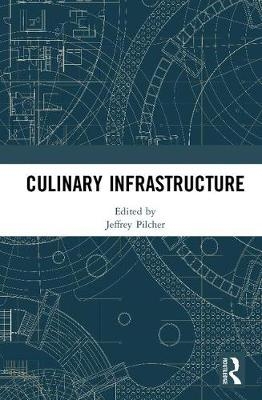
Culinary Infrastructure
Seiten
2017
Routledge (Verlag)
978-1-138-56426-8 (ISBN)
Routledge (Verlag)
978-1-138-56426-8 (ISBN)
By paying attention to control over facilities and technologies as well as the public-private balance over investment and regulation, the authors reveal global inequalities that arise from differential access to culinary infrastructure. It was originally published as a special issue of Global Food History.
Over the past two centuries, global commodity chains and industrial food processing systems have been built on an infrastructure of critical but often-overlooked facilities and technologies used to transport food and to convey knowledge about food. This culinary infrastructure comprises both material components (such as grain elevators, transportation networks, and marketplaces) and immaterial or embodied expressions of knowledge (cooking schools, restaurant guides, quality certifications, and health regulations). Although infrastructural failures can result in supply shortages and food contamination, the indirect consequences of infrastructure can be just as important in shaping the kinds of foods that are available to consumers and who will profit from the sale of those foods.
This volume examines the historical development of a variety of infrastructural nodes and linkages, including refrigerated packing plants in Nazi-occupied Europe, trans-Atlantic restaurant labour markets, food safety technologies and discourses in Singapore, culinary programming in Canadian museums, and dietary studies in colonial Africa. By paying attention to control over facilities and technologies as well as the public–private balance over investment and regulation, the authors reveal global inequalities that arise from differential access to culinary infrastructure. This book was originally published as a special issue of Global Food History.
Over the past two centuries, global commodity chains and industrial food processing systems have been built on an infrastructure of critical but often-overlooked facilities and technologies used to transport food and to convey knowledge about food. This culinary infrastructure comprises both material components (such as grain elevators, transportation networks, and marketplaces) and immaterial or embodied expressions of knowledge (cooking schools, restaurant guides, quality certifications, and health regulations). Although infrastructural failures can result in supply shortages and food contamination, the indirect consequences of infrastructure can be just as important in shaping the kinds of foods that are available to consumers and who will profit from the sale of those foods.
This volume examines the historical development of a variety of infrastructural nodes and linkages, including refrigerated packing plants in Nazi-occupied Europe, trans-Atlantic restaurant labour markets, food safety technologies and discourses in Singapore, culinary programming in Canadian museums, and dietary studies in colonial Africa. By paying attention to control over facilities and technologies as well as the public–private balance over investment and regulation, the authors reveal global inequalities that arise from differential access to culinary infrastructure. This book was originally published as a special issue of Global Food History.
Jeffrey M. Pilcher is Professor of Food History at the University of Toronto, Canada, and the author of several books, including ¡Que vivan los tamales! Food and the Making of Mexican Identity (1998), Planet Taco: A Global History of Mexican Food (2012), and Food in World History (2d ed., 2017).
Introduction: Culinary Infrastructure 1. Culinary Infrastructure: How Facilities and Technologies Create Value and Meaning around Food 2. Frozen Food and National Socialist Expansionism 3. Food Safety as Culinary Infrastructure in Singapore, 1920–1990 4. A Museum’s Culinary Life: Women’s Committees and Food at the Art Gallery of Toronto 5. Developing Constipation: Dietary Fiber, Western Disease, and Industrial Carbohydrates
| Erscheinungsdatum | 10.12.2017 |
|---|---|
| Verlagsort | London |
| Sprache | englisch |
| Maße | 156 x 234 mm |
| Gewicht | 362 g |
| Themenwelt | Sozialwissenschaften ► Soziologie |
| Technik ► Lebensmitteltechnologie | |
| Wirtschaft ► Volkswirtschaftslehre | |
| ISBN-10 | 1-138-56426-5 / 1138564265 |
| ISBN-13 | 978-1-138-56426-8 / 9781138564268 |
| Zustand | Neuware |
| Haben Sie eine Frage zum Produkt? |
Mehr entdecken
aus dem Bereich
aus dem Bereich
Ein Grundproblem der Moderne | Die erste umfassende Studie zum …
Buch | Hardcover (2024)
Suhrkamp (Verlag)
32,00 €
Buch | Hardcover (2024)
Springer Fachmedien Wiesbaden GmbH (Verlag)
219,99 €


